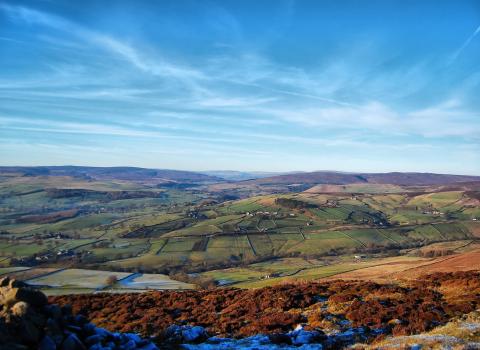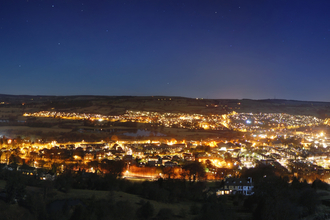How we respond to planning applications
In order to construct a building or change the use of an area of land, you need to submit a planning application to your local planning authority.
It’s no surprise that Yorkshire is a growing region for development with thousands of planning applications submitted every year across our 16 local planning authorities.
Nearly all planning applications will have some kind of impact on the ecology and biodiversity of the area. Some will have a greater impact than others.
When we offer advice to planning authorities
During the time that local planning authorities are considering whether or not to approve a planning application, statutory consultees feed into the decision-making process. These tend to be regulatory authorities such as Highways England or Natural England. The local planning authority must consult them and respond with how they have taken their advice on board.
At Yorkshire Wildlife Trust, we are not a statutory consultee for planning applications. We can respond to any application we wish, as can any member of the public when the public consultation on an application is open. We can offer advice but they have no duty to consult us, nor to take our advice on board or to justify why this hasn't been done. We have a positive relationship with many of the local planning authorities, who proactively consult us and ask for our advice, but this is not always the case.
We prioritise responses to those areas where we have most local knowledge, those closest to our nature reserves and projects, and those where we think we can have the biggest impact. We also give high priority to applications or plans which would significantly impact sites which are designated for their wildlife value, such as locally, national and internationally designated sites and priority habitats.
We hope that our reputation as knowledgeable professionals means our advice is seriously considered when determining whether or not to approve a planning application
When we object to planning applications
We aim to be a professional organisation who offers pragmatic advice about the needs of nature and wildlife in planning applications and how to balance that against the need for a particular type of development.
Rejecting every development would not only frustrate and damage our reputation amongst the partners we work with, but isn’t a practical approach to a sustainable future. Ultimately, we don’t want to stop all development, but want to see good development.
We also put a huge amount of effort into strategic and forward planning to reduce the frequency of conflict between development and wildlife protection in the early stages, working with planning authorities, developers and other stakeholders to find solutions which promote biodiversity and wildlife alongside meeting the need for development.
It is rare that we will openly object to planning applications. We hope that this means that our voice is even stronger and our influence greater when truly detrimental schemes are proposed. This was the case for Askham Bog, where we used all of our planning resources to fight an application which we believed would result in significant harm to a nationally designated site, the Trusts first reserve and the last remnant of a now isolated, ancient habitat. Unfortunately, as a charity, we do not have the resources to fight with such vigour on all impacting applications.
When we work with planners and developers
Occasionally we’ll get involved with applications if it may be possible to secure a large environmental gain or work with planners and developers to change their way of designing schemes.
We can only go so far – how you can take action
Like so many of the concerned residents who contact us for advice or asking us to oppose a scheme, we are devastated to see the catastrophic declines in nature and wildlife taking place around us.
Through our nature reserves, ambitious projects, campaigns and advocacy, we aim to create a wilder Yorkshire, both for wildlife and for people.
We do everything we can, within the restrictions of local planning policies, our own resources and the other barriers in front of us, to minimise the impact from development on wildlife and nature and establish ourselves as a reliable, trusted source of advice so we can have greater influence over schemes in the future. But we can’t respond or oppose to every application.
There are a number of ways in which you can take action from home. We have lots of advice about how to respond to planning applications as a community or an individual on our website, including recording the wildlife present in areas earmarked for development, and how best to rally support from your local MP and other stakeholders.


